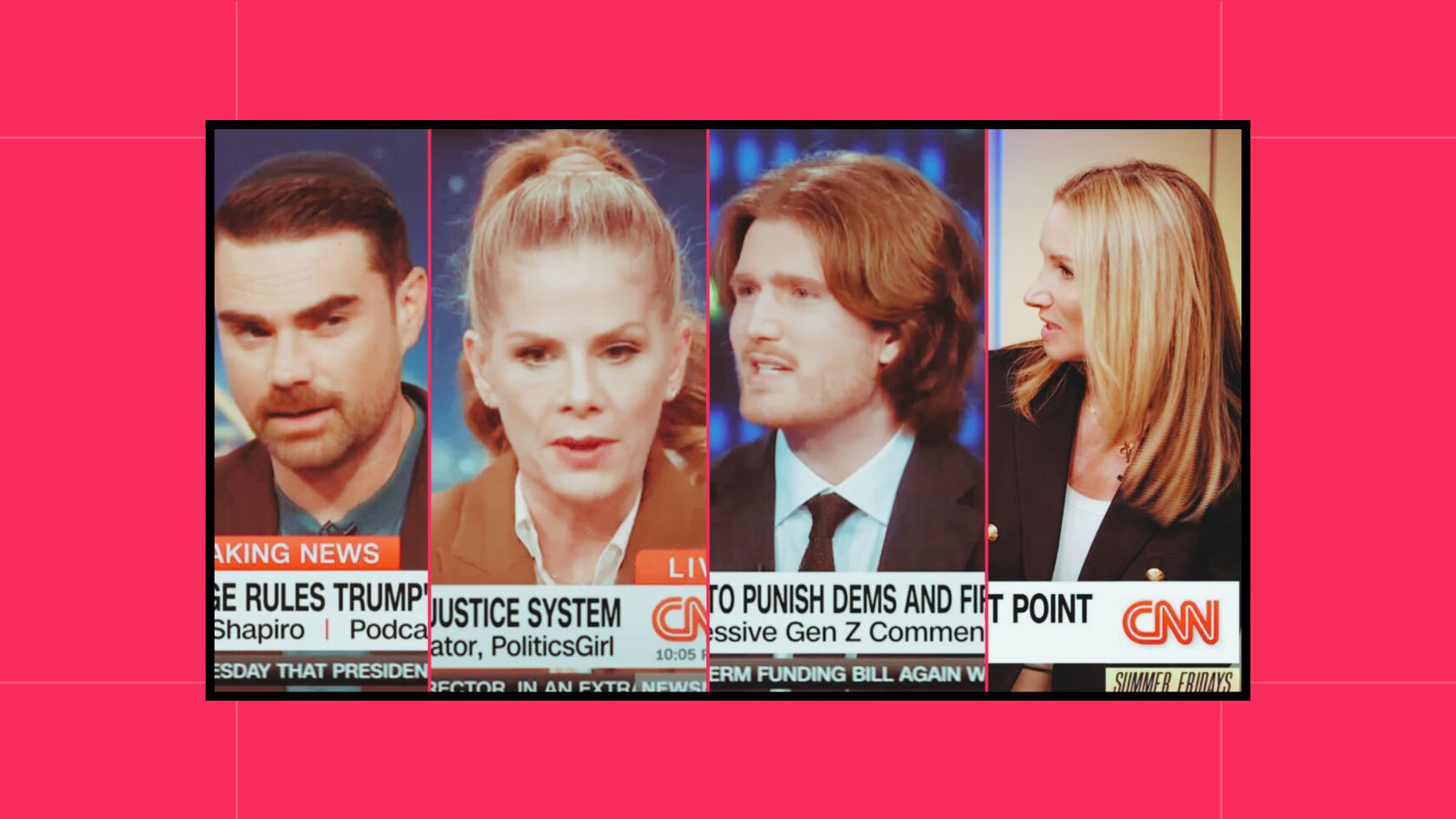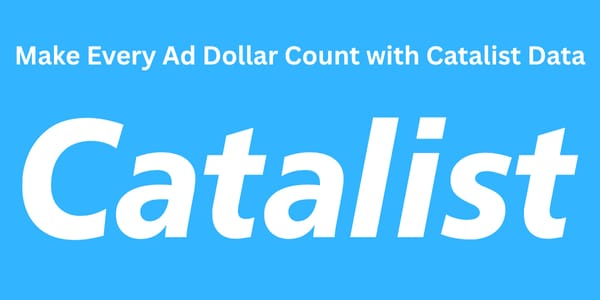
DEEP DIVE
Youtube is eating cable news
Over the weekend, Derek Thompson wrote a fascinating piece on how “everything is television now,” asserting that “the grammar of television has conquered the entire media landscape.” You should read it here. Most relevant for this newsletter, he cites political protagonists like Donald Trump and Zohran Mamdani as people who have already recognized that “mastering the grammar of television does not feel secondary to political success in America; it is political success in America.”
Thompson is right, and that dynamic doesn’t only apply to politicians. I’ve watched all year as a new cohort of political commentators have built audiences from zero to over 1 million on platforms like YouTube, by deploying some of the same styles and formats popularized on cable news for years.
Now, I’ve noticed those emerging online voices are being booked on cable news at an increasing rate. As old‑guard networks like CNN and MSNBC scramble to fill hours of talking‑head programming, they’re pulling directly from YouTube’s political creator ecosystem to build a new class of all-star pundits.
Recent guest rosters are a good illustration: YouTubers and podcasters like Adam Mockler, Adam Friedland, Leigh McGowan, Jack Cocchiarella, Tim Miller, Cameron Kasky, Ben Shapiro, and Jennifer Welch have turned up in recent weeks not as niche voices, but as regular pundits, flanking professional anchors and political operatives during segments and roundtables.

The benefits for the networks are obvious, as these creators are already fluent with the news cycle, often consuming hours of content daily, and possess the kind of clippable, camera‑ready delivery that can take politicians years to hone.
“It’s pretty low risk high reward in terms of a new guest for a show.” Lauren Boone, founder of Shimmer Communications and a former producer at MSNBC told me. “YouTubers have loads of experience so you don’t have to worry as much about any nerves they may have, how they position themselves, or if they are comfortable on a camera.”
The economics make sense too. A CNN segment producer knows that bringing in a YouTuber with 1 million loyal subscribers means tapping into a highly-engaged audience that’s primed to clip and share the network’s content across social media. For example, when Adam Friedland appeared on Ari Melber’s MSNBC show last week, his viewers (like myself) heard about it primarily from his social media channels, which became free marketing for the network.
On top of that, the median age of the cable news audience is in the upper 60’s and there’s an urgent need to bring in younger viewers. By featuring personalities that Gen Z or millennials already watch online, cable networks are attempting to extend their brand credibility to younger demographics without fully abandoning the old-school, studio‑panel format that defines their programming.
“If I am a Gen Zer and I know my favorite podcaster will be on MSNBC, CNN or Fox News, there’s a higher chance I’ll tune in to that particular show – hopefully, in the producer's eyes, that leads to the viewer becoming a regular watcher,” Boone says.
This new class of pundits may be shifting the overall tone of cable programming too. YouTubers and podcasters can be looser, more combative, and more meme‑aware than a back-bencher congressman or elderly political hack. At the end of the day, cable producers pulling guests from the online creator ecosystem is both about creating strong content and maintaining cultural relevance. And as political YouTube continues to boom, networks like CNN, FOX, and MSNBC borrowing personalities from the platform is one way they can elbow back into the conversation and into the feeds of new audiences.
SPONSORED
Ready to Upgrade Your Ads with Catalist Data?
Catalist’s new digital audiences help progressives reach the right voters, faster! Access 130+ segments wherever you place ad buys with high match rates, emails + phones included. Email us at [email protected] or See how you can activate your audiences today.

AD WATCH
An election without Facebook ads
Despite the high stakes of New York City’s mayoral race and Democratic candidate Zohran Mamdani’s reputation for digital fluency, the leading contenders for mayor haven’t spent a single dollar on Facebook or Instagram advertising in the past three months.
According to Meta’s political ad library, both Andrew Cuomo and Zohran Mamdani have completely shunned advertising on Meta’s platforms, opting instead for a broadcast-heavy approach that’s saturating New Yorkers’ TV screens. Following Mamdani’s decisive primary victory in June, one of his chief strategists confirmed that their campaign was intentionally skewing their paid media strategy in favor of old-school, broadcast TV ads to reach certain subsets of New Yorkers. “The success of his social videos…allowed us to stay far more competitive on TV, without having to put money behind Meta because he was organically breaking through.”
I should note that while the top two leading candidates haven’t spent any money on Meta’s platforms, Fix the City, a group supporting Cuomo, has spent around $70,000 on Facebook and Instagram ads in the past 90 days, making it the top spender on those platforms in the mayoral race.

ROUND-UP
More things you should read or watch this week
Maine Democratic Gov. Janet Mills announced her candidacy for U.S. Senate yesterday, and every message she posted on X was immediately ratioed by grassroots Democrats asking her to step aside and support Oysterman Graham Platner instead. Meanwhile, Kirsten Gillibrand’s DSCC is attempting to rig the primary election in Mills’ favor, immediately forming a joint fundraising committee with the 77-year-old governor.
Someone leaked thousands of group chats sent by leading members of the national Young Republicans to POLITICO, and they are just as terrible as you’d imagine.
City & State NY has an interesting profile up of Zohran Mamdani’s campaign manager, Elle Bisgaard-Church.
I’ve Had It host Jennifer Welch took Sen. Cory Booker to task on the podcast’s most recent episode.
If this is the future of the Democratic Party, I’m out.

ONE LAST THING
Duncan’s new media blitz
At least on the Democratic side, hitting the new media circuit isn’t just for potential 2028 presidential contenders. This year, the political internet is starting to fill up with down-ballot midterm candidates eager to connect with grassroots Democratic audiences on their screens, in their feeds, and through their headphones.
One prominent example is Democratic candidate for Governor of Georgia, Geoff Duncan, who has sat down for interviews with Keith Edwards, The Contrarian on Substack, Meidas Touch, I've Had It, and the Tennessee Holler since launching his campaign last month.




